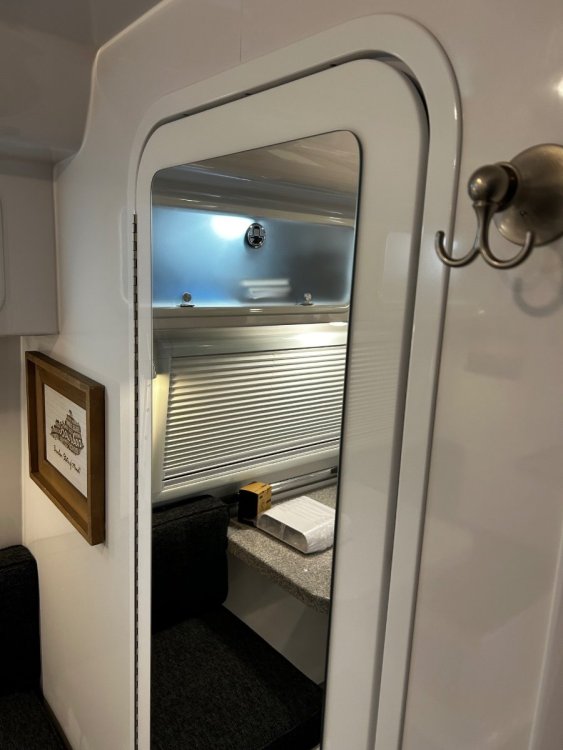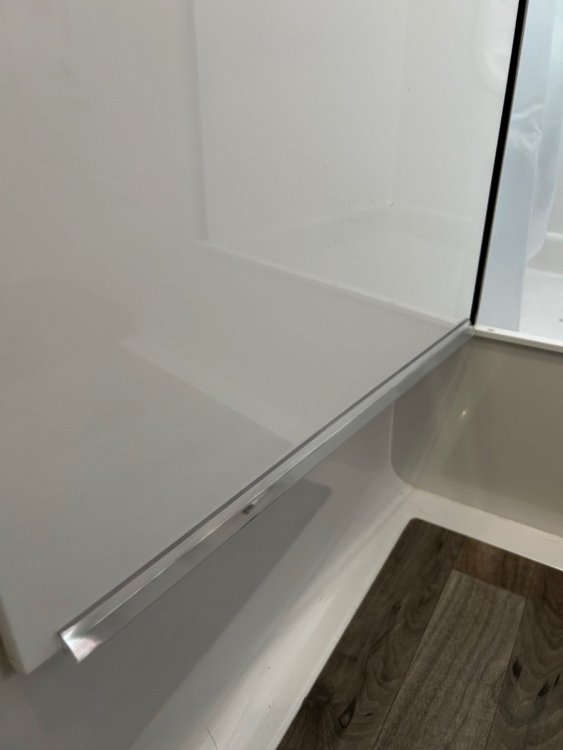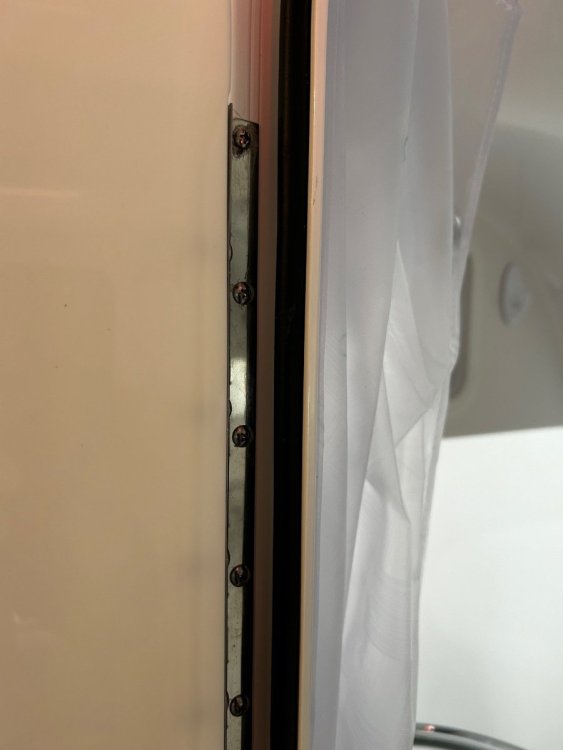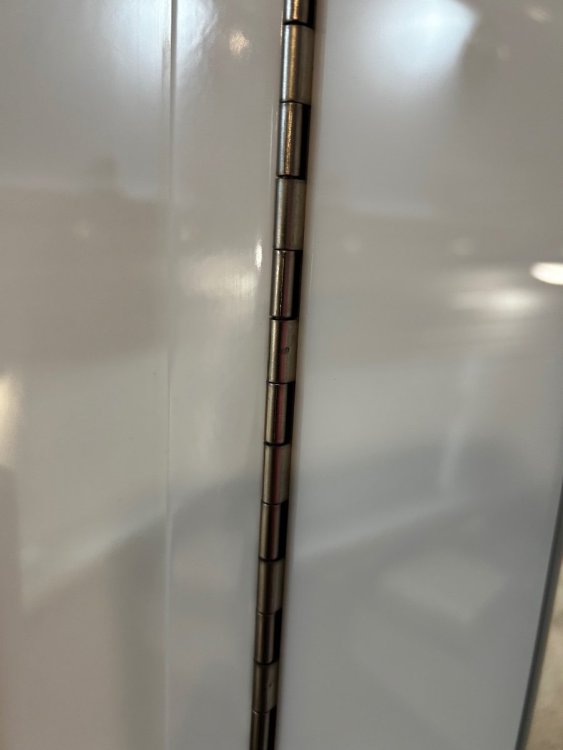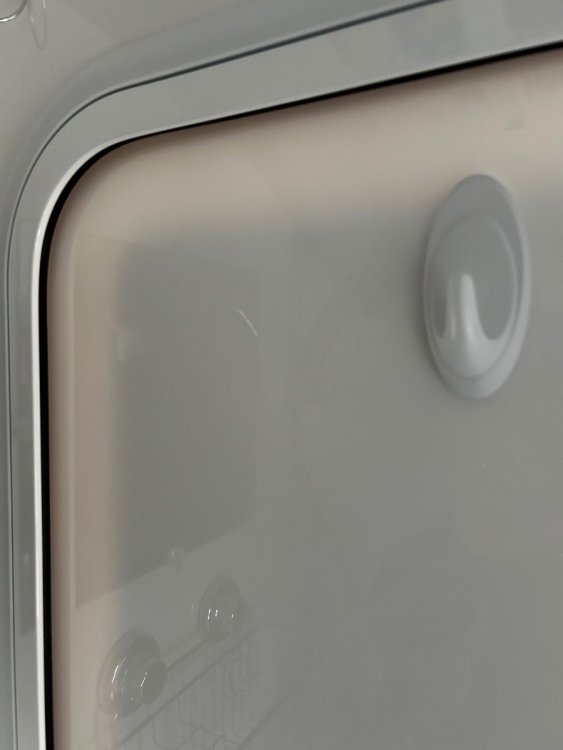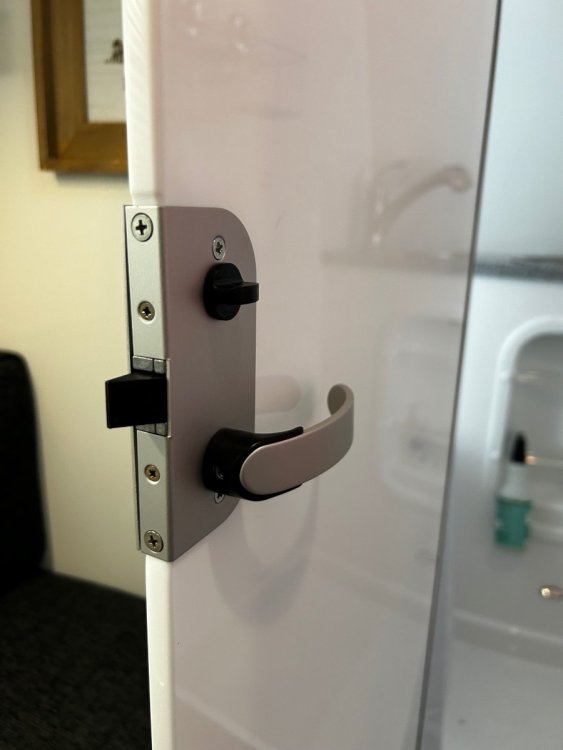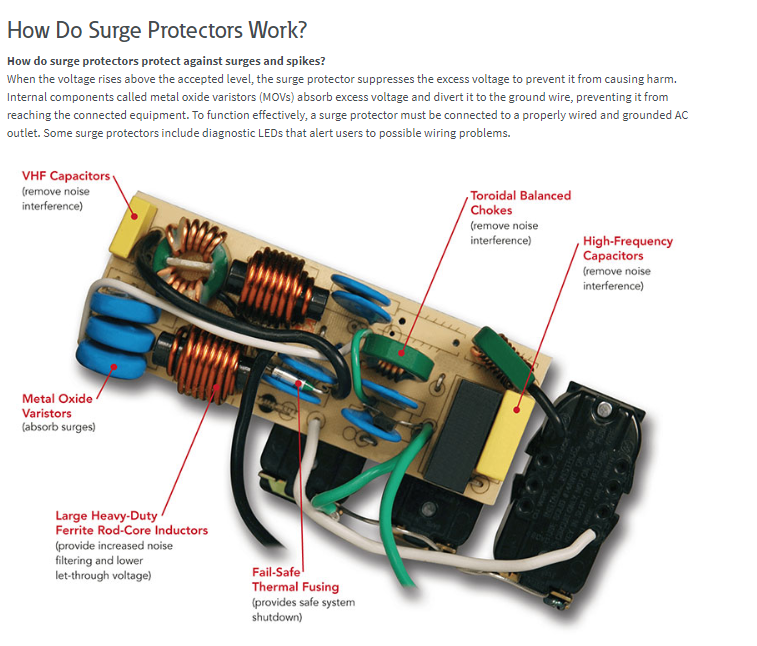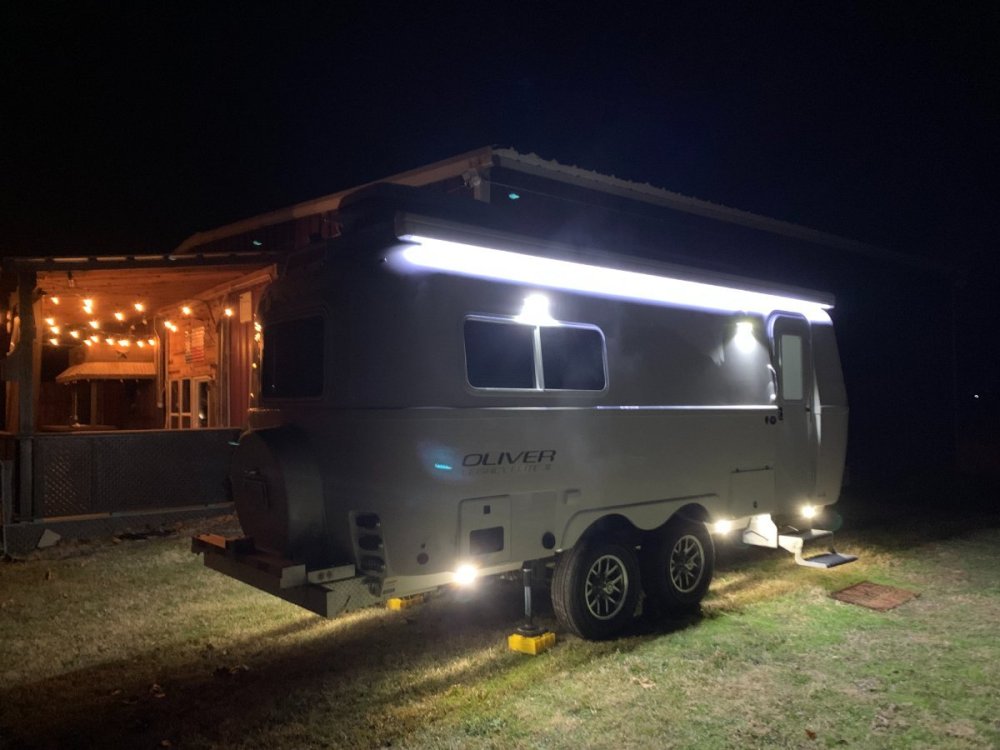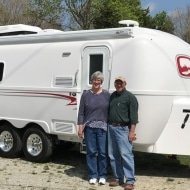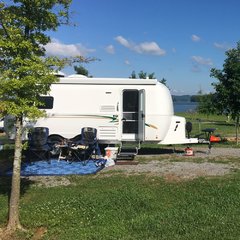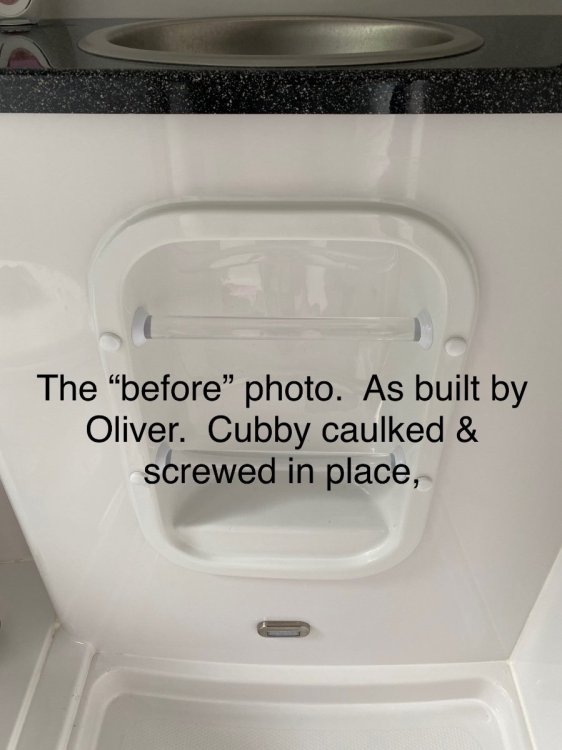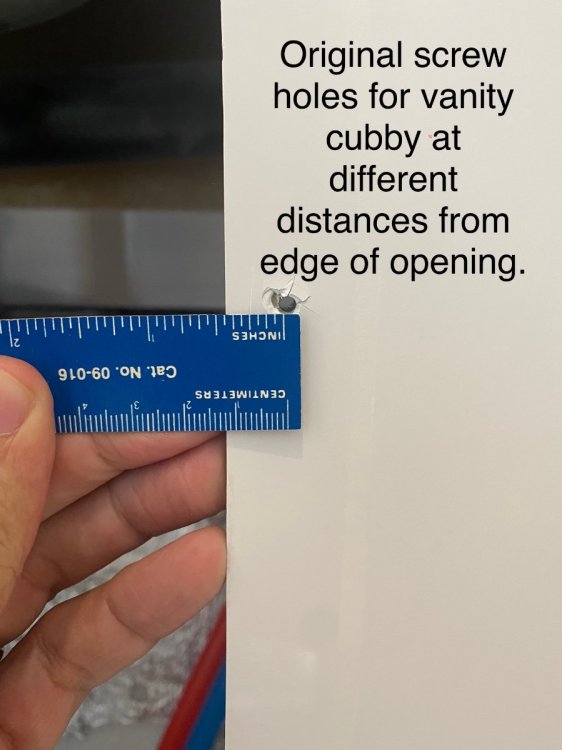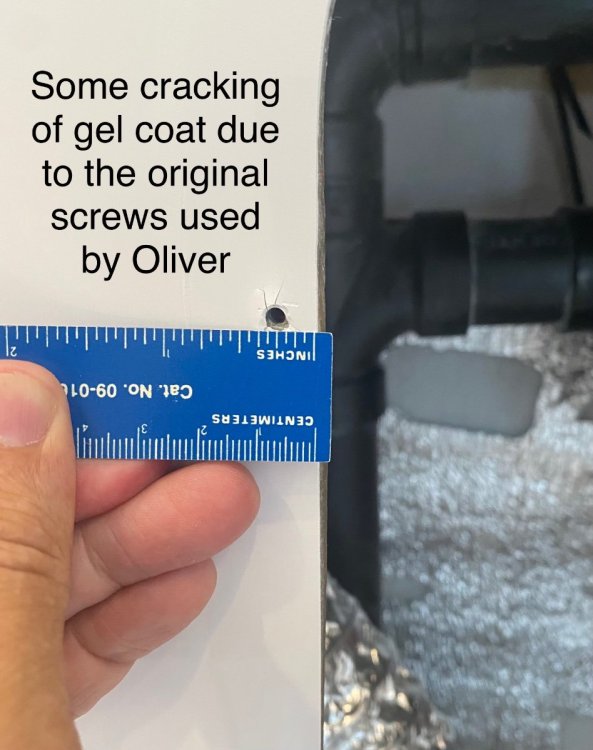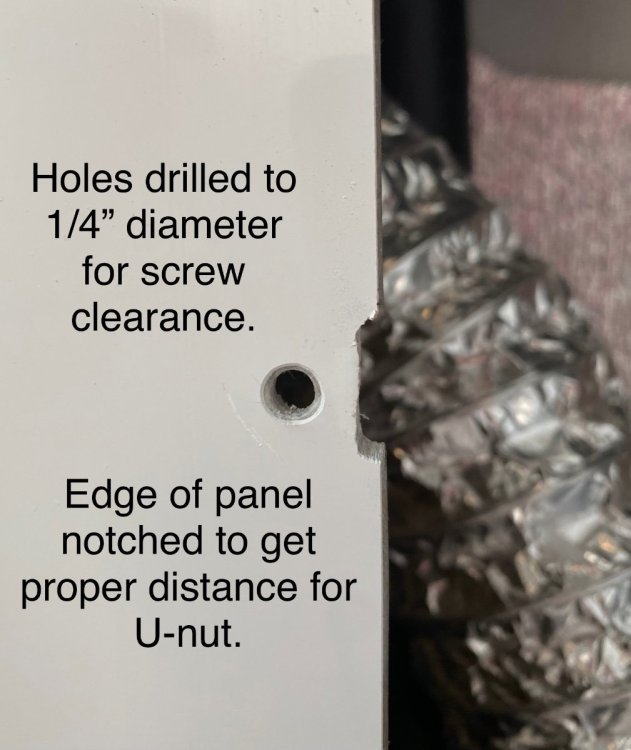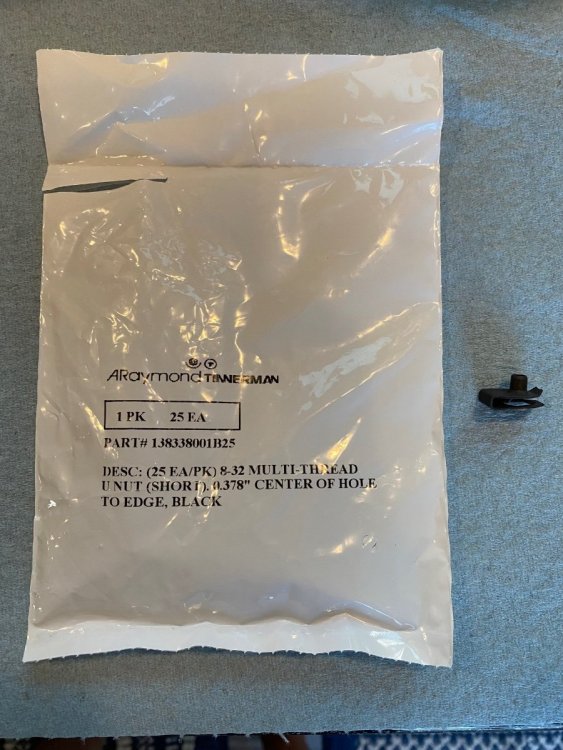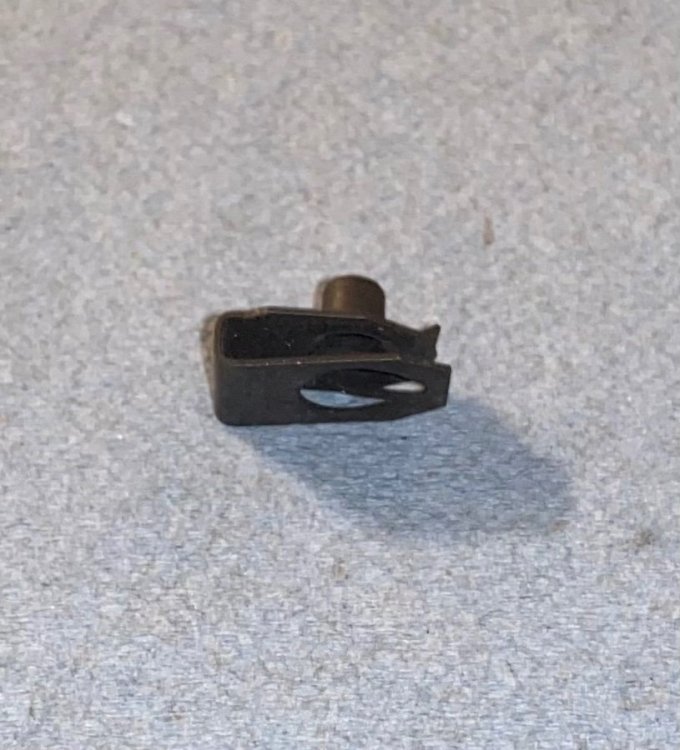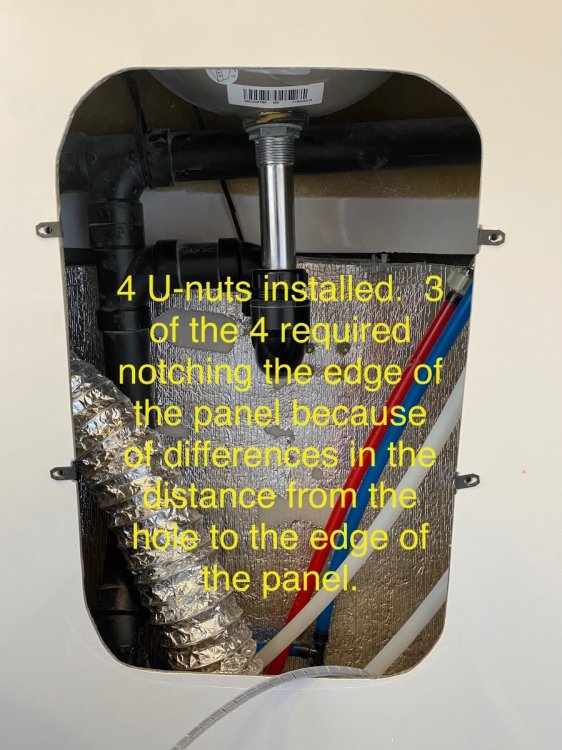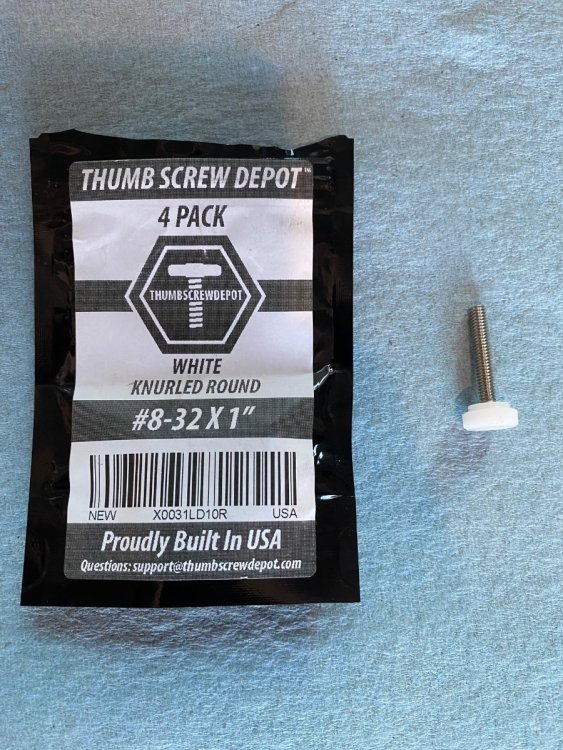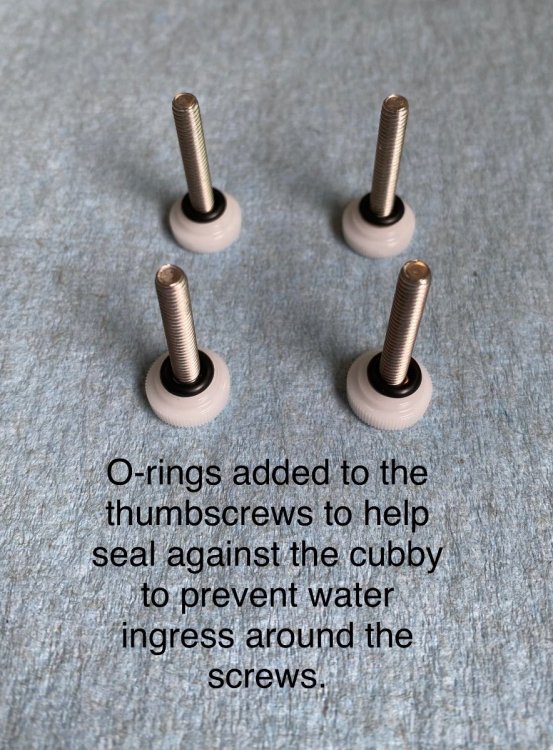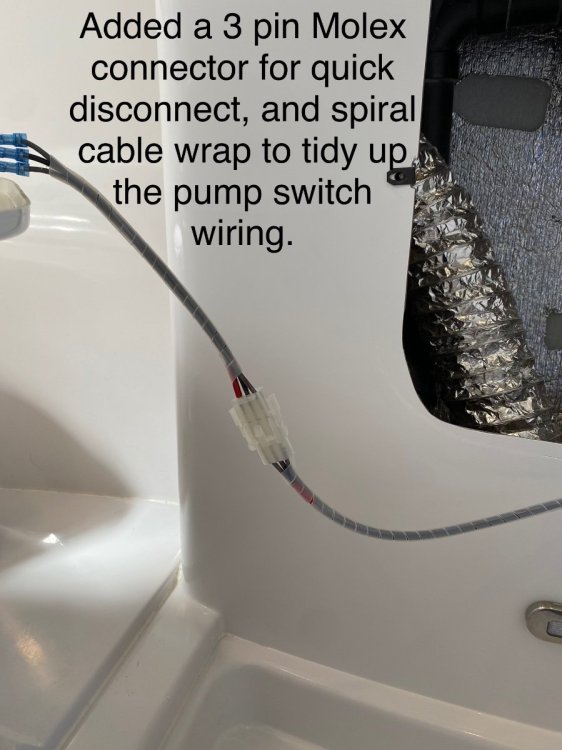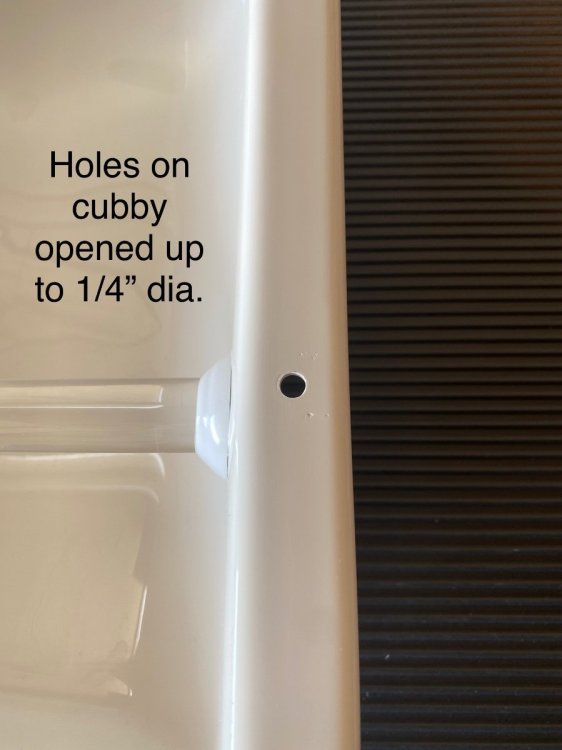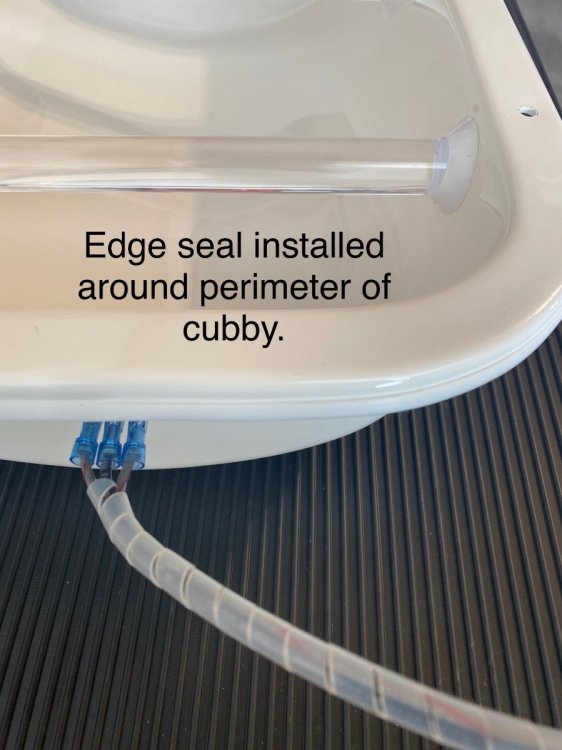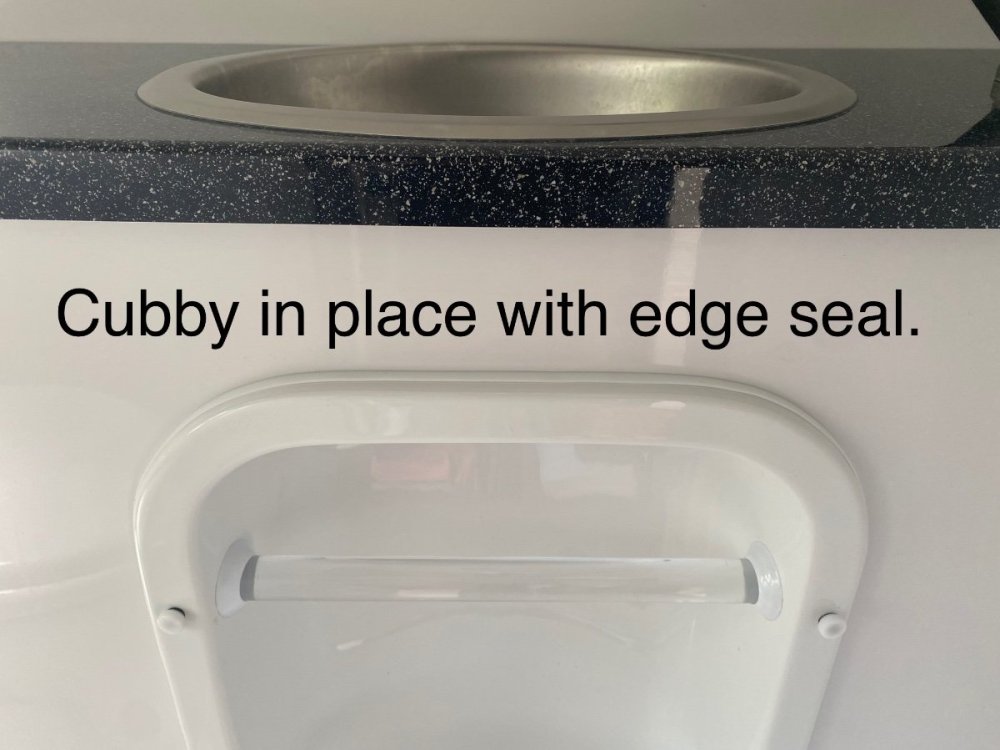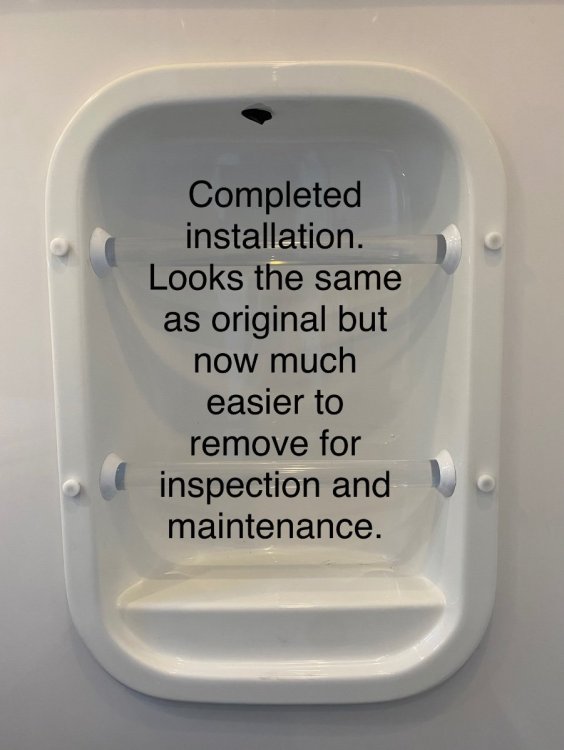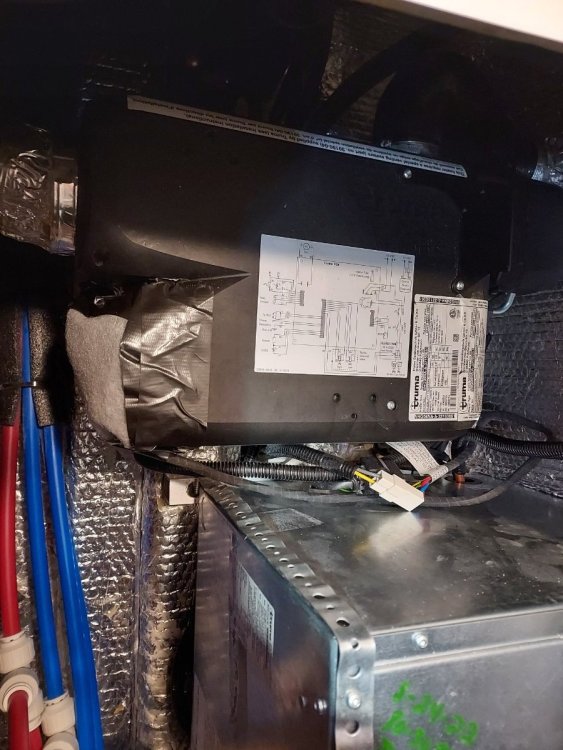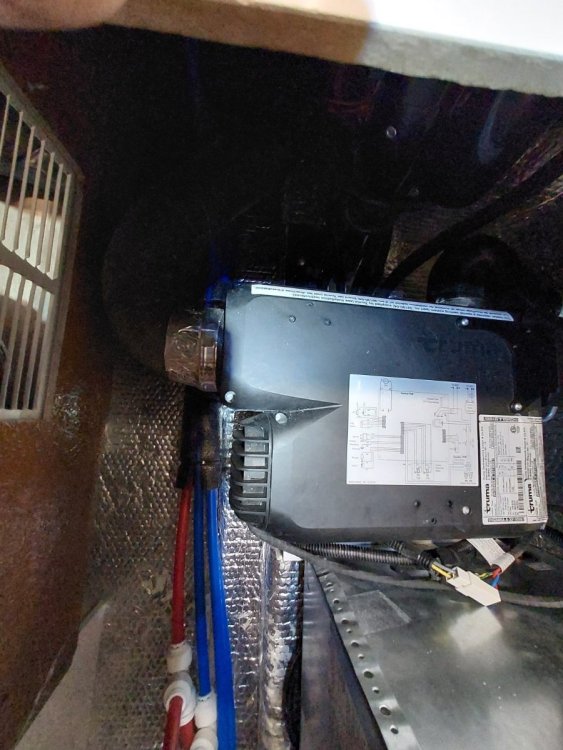Leaderboard
Popular Content
Showing content with the highest reputation on 01/04/2024 in all areas
-
Your statements are mostly correct, but let's be a little more specific. The Xantrex unit is really two devices: a converter and an inverter. The converter takes shore power (120v AC) and converts it into DC volts to charge your batteries. This happens automatically when you plug your trailer into shore power. However, the Xantrex has nothing to do with solar charging. There is a separate device for that. You didn't post the year of your trailer, but your hull number tells me it's new. Our trailer has a Zamp solar charge system, but I think the newer units use Victron(??). Either way, there should be another control panel somewhere inside your cabin for solar charging. That system should also be passive/automatic for you. It'll work when there's sun without any interaction from you. The inverter part of your Xantrex does convert 12v DC battery power to household 120v AC for your outlets, etc. but it requires interaction from you. Turn it on (silver button pressed in) when you want 120v outlet power from the batteries. Turn it off when you don't need it because the inverter draws power from the batteries even when you're not using the 120v outlets. The green LEDs and display on the control panel tell you what it's doing. (You can press the OK button to wake up the display at any time.) Hope this helps clear it up a bit for you.8 points
-
Thought I’d post a few pictures of the new bathroom door. I like the door, it is an improvement over past versions. It appears to be made of a composite material, as opposed to the closet and pantry doors. Smooth glossy finish on both interior and exterior sides. From the inside of the bathroom, it is translucent as you can see light around the perimeter of the mirror. nothing major. There is a drip “rail“ at the bottom of the door to prevent leakage, as well as a rubber gasket around the perimeter. My only concern is the latch. You must give it a firm push / pull in order for the latch to click fully closed. This may stress the handle over time. overall I like it. Time and closing technique will tell. Mark7 points
-
Ever since getting my Oliver I have loved modifying different aspects of it. I have done a bunch of stuff to the electrical system such as going mostly Victron for all components except for the inverter. Here is my latest mod which consisted of building an aluminum rack and adding 3 200 watt Newpowa solar panels for a total of 600 watts onboard. They will feed into a Victron 100/50 SCC. Just got the panels installed today and will be working on the connections tomorrow. I also need to fabricate a bracket for the front panel for a little more security but overall it is very solid. 😛6 points
-
One more consideration. Replacing an external unit is a lot easier than the cost and time to replace the onboard unit.4 points
-
Full credit to the Eaton Corporation for the below graphic. My post addresses a bit of the technical side as to why some owners like double protection and use an additional surge protector at the utility source. As indicated in the Eaton Corporation graphic, there are six components in better surge protectors designed for RV use. Most of them act as filters to block noise and surges. One, the Metal Oxide Varistors (Blue disks below) work differently. They actually absorb voltage spikes. And they do it very well. However, over time they take a lot of "hits" and in the process of absorbing the excess energy they degrade. As they degrade their effectiveness declines. These components generally are not serviceable. So if a spike gets absorbed by a surge protector at the pole, it extends the life of the much more expensive surge protector in our trailers. Additionally, the Metal Oxide Varistors in any surge protector can only absorb a limited amount. Lets say that your camp ground has a tremendous spike heading your way. The Chokes and Inductors of your power pole will "knock down" the spike as much as they can. What gets by then hits the surge protector in the trailer. This one knocks the spike down further. It also gives us an error code that we can see inside the trailer allowing us to take action (hopefully) before the next spike hits us. As is evident, it is for sure belts AND suspenders, and for many locations is highly recommended. Hope this helps, GJ4 points
-
No, I got the Lithionics 390ah setup when I bought my Oliver. I had ordered it when they were doing the lifeblue batteries but they switched before my final selections so the gave me that price for the Lithionics which was I think around $600 cheaper. The Lithionics are great batteries but if I had wet dells or AGM I would definitely be installing the big Epoch. Epoch also has some 300ah batteries coming out that are sized so you could put 2 in the battery tray. 👍🏻 John4 points
-
TLDR: We drove to Tennessee, then to Arkansas, where it rained, got sick, drove home and forgot all the pictures. A few bad pictures are at the bottom of this wall of text. Our adventure started on Sunday December 17. It was sunny and cool and stayed that way all the way to Tennessee. The first leg of our journey was my wife's idea. She wanted to extend this trip a little longer, so she talked me into leaving a day early with an unnecessary layover in Hot Springs, AR. We left Longview, TX, at 9am. Traffic was good and we made very few stops, so we got there at 1pm. After checking into the hotel, we drove around and ate at a fast casual restaurant named NEWKS. We have one of these in Longview, so we knew the food was good. With not much left to do, we went back to the hotel and stared out of the window overlooking the lakes. Monday was cooler but still sunny and bright. We left at 7:30am after eating the hotel breakfast, which wasn't that good, but it was free. We made good time until my wife noticed the big blue and yellow IKEA warehouse in Memphis, TN. Unfortunately, we stayed in there...let me clarify, we got lost in there for several hours. Thankfully, we didn't spend much to escape. They have a lot of very interesting stuff but most of it was about three times what we wanted to pay for it. I really wanted an expandable light globe that looked like the Death Star, but I resisted the Dark Side. We bought just enough to get a free bag then left. The rest of the drive was uneventful. After six hours, a stop at McDonalds to load and unload, we arrived at Hurricane Mills, TN. Once we got well past Memphis, the drive started getting pretty, but not amazing. We filled up the diesel tank for the first time here. After checking into the hotel, I drove over to Loretta Lynns Kitchen for some greasy food, then we called it a night. Tuesday started to get interesting. We drove down Dyer Road and feasted our eyes on some Tennessee back country, arriving at Oliver at 7:45. Our appointment wasn't until 8:30am but we got in early, and Hannah walked us through an exhausting power course. I had already learned most of the systems on Oliver's website, but my wife needed the hands-on training which lasted past lunch. My hats off to the people at Oliver. They are some down to earth great people. I made the right choice when I splurged on this trailer. Lori got us squared away on the paperwork and Chase stopped by for a chat over coffee. They had another couple scheduled for delivery later in the afternoon, so we rolled out onto the on-site campground and stayed the night in our new Oliver LE2. It was a cold night, but we stayed quite warm. Sadly, I failed to get pictures because I was too excited, then too tired. We planned to get pictures when we got to my parents' house the next day. That didn't turn out the way I expected. Wednesday started out nice. We slept comfortably, the trailer performed admirably, i.e. nothing was broken or messed up. Since we didn't bring any food, we skedaddled on out and hit 412 back to Arkansas. We slept later than usual, so we skipped breakfast and grabbed brunch at Subway. The trailer pulled like a dream. After big, hefty and obtrusive monsters, this thing slipped through the air like you would expect something with the name of Airstream to do, only much better. It didn't wobble, it didn't bounce. It is so well balanced; I hardly knew I was pulling a trailer. Obviously, my fuel mileage suffered some and the Cummins didn't have as much pep, but I can't say enough about this. I love it. Sadly, the trip started to go downhill once I started going uphill at Alma, AR, and it had nothing to do with the trailer. It started raining. Thursday, rain. Friday, rain, Saturday, rain. Sunday, rain. Did I mention, it rained? We arrived at my parents' house on Thursday at 8:30pm to rain. We parked the trailer, unhooked and got it leveled in less than 10 minutes. I was soaked but still had a great time. Obviously, it was dark, and the trailer was filthy, so we didn't get the pictures we had planned on getting when we arrived. But this week gets better. First the rain, then I couldn't get my dad's power to work with the trailer. Thankfully, we had enough foresight to purchase the 390 AH Lithium package. Since we had no power coming in and the solar panels were denied the glory of the sun, we were careful not to overindulge our electronic resources. Some coffee in the morning using an electric tea kettle, (I know, I need a regular kettle that I can use on the stove.) and a little TV at night kept the tanks above 50% for four days. Saturday, it went from bad to worst. My dad got sick with some kind of flu on Friday. Then my mom got sick the next day, followed by my wife. My sister, who works at the hospital never contracted this illness, so she elected to stay and take care of them while we drove home. Halfway through the drive on Sunday, I started feeling bad. Though I always try to look for the silver lining in adversity, it took some sunlight once we crested the Ouachita Mountains to liven my mood. We got home after dark. The rain had stopped but my wife felt terrible. I got her in bed and left the trailer hooked up to the truck for two days before I got the energy up to back it in, level it and hook it to some good power food. It was an executive decision on my part. I monitored the batteries using the LI3 app, making sure they didn't drop too low, and I left the heat on in the trailer at 60 degrees to combat the early morning chill. Once I got the trailer hooked up, I finally talked myself into some pictures as follows: The first two images are of the outside northeast of my house. The third picture is of our messy interior complete with dog bed. Fourth picture me not feeling too good. We are planning to spend a few days this weekend at Ratcliff Recreation deep in the Davy Crocket National Forest. Though not technically its maiden voyage, it will be the first for what we bought it for: Camping, not mooch docking. I will get pictures this time. I promise.3 points
-
Yes leave the on/off button on the inverter in the off position, use the button on the remote/panel to turn the inverter on or off.3 points
-
Yes. Completely separate functions. Turning the inverter off has no effect on the converter (charger).3 points
-
Yes, I posted after our Oct 20 visit that Oliver is producing this door in house. A much stronger door/mirro combo with less flex and a much more secure latching system. I hope it will be a retro fit! As always nice work Oliver!! Onward! Patriot🇺🇸3 points
-
Jason, congratulations on getting the Ollie home safely with all the adversity, and please note… your trailer isn’t messy.3 points
-
Welcome and Congratulations from Hull 1182!! Hope your family is feeling better. I am sure you will enjoy your adventures in your new Oliver. Pictures are always a good thing.3 points
-
If you have to ask then this exalted position is well above your station in this life - sorry.3 points
-
In order to "complicate" this discussion a bit further - The remote buttons used for being able to turn on the inverter "remotely" are connected to the inverter via what looks like a telephone cable. The little contacts inside that remote have been known to become dirty over time and can make the remote basically useless. If it appears as though the remote is not working - then - try using the on/off button on the inverter itself. Bill2 points
-
So far I've made it my practice to test the plug prior to connecting the camper and rely on the onboard progressive unit to do it's job. I can see the interest some have in protecting the hard wired device, and have purchased a portable device but just haven't put it to use. I purchased a Progressive Industries circuit tester before getting the Oliver. I leave it in the same tote that I store the shore power cord in. Step one - Test the power supply. Step two - If good, drag out the cord and connect. Circuit Tester2 points
-
I experienced an issue with the factory installed surge protector that damaged my compressor fridge control board. A couple of years ago we were in a campground which was experiencing extreme voltage spikes. The voltage was spiking to nearly 200 volts then dropping back to a normal 120ish then several minutes later spiking back to near 200. We were not at the camper during much of this and as soon as I realized what was happening I disconnected from shore power and operated on 12 volts for the rest of our stay. The problem is that the surge protector interrupts the incoming power but then reconnects the power. This situation is both good and bad. It’s good because it automatically reconnects the power somewhat seamlessly. The bad is because it reconnects power somewhat seamlessly. By the power turning off and on fairly rapidly the compressor control board was rapidly and repeatedly switching between DC and AC supply. Be aware that some electrical or electronic equipment can be damaged by repeated on/off cycles. So, based on this one probably rare occurrence I might be inclined to search for an additional layer of protection. I am leaning towards a boost transformer based product like the 30 amp Hughes surge protector. The boost transformer will increase the voltage if it sags and will absorb the voltage if it increases too much along with the normal surge absorbing solid state devices. I’m still looking into this option as there may be other alternatives out there that are better. Anyway, just a thought. As a side note: I contacted the Progressive Industries folks with a question about the large difference between the amp reading on the remote readout and my clamp meter. They didn’t know the answer nor did they really care to try to figure it out but, they sent me both of the internal circuit boards and the sensor coil. Basically all of the internals of the surge protector free no questions asked. I did tell them that the unit is seven years old but that didn’t seem to matter. So even after seven years they still sent out free parts to rebuild the surge protector……not bad.2 points
-
Will be heading to the mother on Feb 5th for warranty service. I will definitely be enquiring as to the retro fit possibilities.2 points
-
When I saw the title, I was expecting a different subject matter, that of upgraded 115v receptacles with smart features. I'm not sure what smart features would be useful on our Olivers, but I have considered changing out a few of the 115v receptacles for the type that have the built in USB receptacles. To me this would be well worth the upcharge from the factory. Regarding the actual topic of the thread, I knew of these from our boating days and hadn't even considered it then, let alone now with the Oliver.2 points
-
That's the one we have. Didn't buy it for the Oliver, we already had it from a previous trailer, but figured we'd use it since we had it. I check the LEDs on it before I plug the Oliver into it as a quick check on the power status.2 points
-
Jason - You are now an official card carrying member of the family - welcome (again). I too thought that the "Ollie Gods" were against me when I picked up. It had the nerve to rain and we were camped in a mud hole to boot. Sure, I washed (as best I could) the shiny new Ollie the next day but (you guessed it) it only rained again. At least we didn't get sick! Hope all are back to normal by now. Certainly you will have a great story to tell and re-tell about your delivery trip. Hope that the "first real" camping trip goes without issue and you can settle into that lovely new Oliver. Bill2 points
-
This sounds like me. I never buy extended warranties. Not worth the paper they are likely not printed on. Murphy's Law is almost always right. My philosophy is just save the money for a new one or learn to fix the old one. I know Truma offers a free extended warranty by registering, so I will get that but anything past two years is just bonus.2 points
-
And 20K vs. 60K miles is a big difference. You certainly have ample time at near 5 years with relatively low miles. My advice is the same advice Mike already gave, but I'll say it another way. Don't buy tires from OTT, as they are a long way from a Rocky Mountain trip, down to Key West, up to Maine, or wherever you will travel. Discount Tires is likely the largest national tire chain in business today. Buy from them when the time is right (I stick to 7 years max) and whenever you need to check pressure or add air, fix a flat, replace a tire or leaky valve stem, or just to rotate and balance, they will be nearby at no charge for many of these service needs. You may pay a little extra up front for this national service coverage, but it could save you later. They are everywhere and generally have very large parking lots and driveways, easy to pull into with a trailer (except for their store up here in Prescott, AZ!) The fact that they have a store up here, in a small town in the mountains says a lot too.2 points
-
I replaced the original zamp panels installed by Oliver. I used 1/8 inch thick aluminum angle. I used 1 1/2 inch for the cross bars that I mounted to the existing Oliver installed brackets. I framed the panels with 1 1/4 inch angle down both sides. This frame was then bolted to the 2 cross bars. I’ll grab a few more pics tomorrow.2 points
-
Wow! That's great! I'm very excited for you. We put 600 watts on the boat several years ago, and ditched the cord. 400 watts a few years ago on the Elite,,and rarely have to break our the genset. (200 watts portable solar, in addition.) Any more photos of brackets? Did you have solar before the 600? I'm really looking forward to your reports.2 points
-
Chris and John: Thank you! Roger I snipped the wrong picture from OTT. Have deleted it above. I went deep into my pictures and snipped this one of our roof line. We just have up front the Omni Antenna, vent stack and bath fan. The Yuma Copper Iridium Gallium Selenide (CIGS) panels are rated at 200 watts and are roughly 26" X 80" in size. Ollie is 7' wide with two puff up/downs along the width of the roof. As such, dimensionally they will easily fit on our roof running starboard and port (S/P) direction with room to spare. With your measurements in mind: Without moving the antenna we can easily get two each 200 watt panels laid S/P. If I relocate antenna, it appears that we may be able to get three of the 26" wide panels laid aft of the bathroom fan and vent stacks. Granted laying the panels over the vertical roof section and their run up/down curved sections will reduce the outputs of the panels likely in the 8% range. "ASS of U & ME" such would de-rate the panels to 184 watts (maximum calculated) output. One of the significant benefits of these panels in partial shade is that they only de-rate by the shade over the sections shaded. Unlike many other systems, partial shade impacts the entire panel. For planning purposes, I'm going to assume only 175 watts max output. So, conservatively we are looking at getting maybe easily 350 watts or maybe 525 watts of power if we relocate roof penetrations. Point is go get what we can with virtually zero aerodynamic drag, and far less visual pollution to boot. I have sent the MFG Rep a series of questions about their panels, and will update this thread with their responses. GJ2 points
-
If you have to ask then this exalted position is well above your station in this life - sorry. Well said. However through exhaustive study and practice, I have learned that some are engineers who definitely were born with a warped sense of humor.2 points
-
Wait, how do I achieve this level of Rabbit Holiness? This is literally my life dream.2 points
-
That's true for many. Others plug in all the time. I'm not even considering this for the boat, as we haven't had to "plug in" the last six years, since we added solar. Everyone's camping style is different. But, I'm glad Oliver continues with a relatively affordable industry standard connection. The price of smart plug cords, for a rv, is ridiculous, imo. But, each to his own style. If someone else balances cost vs convenience, and convenience wins, I'm no one to judge.2 points
-
The Smart Plug looks to be perhaps a quicker connection? Water tight? What is the criteria? Is the OEM outlet/plug inferior? I like the screw ring on the OEM plug, it's in there, a SOLID connection. I'm with some others here, not my time and money. Sheesh, I've made a dozen upgrades in just 6 months, didn't think of this one. With solar we rarely connect, and the cord mostly sits in the Oliver trunk!2 points
-
Don't bet the ranch on that - once down the rabbit hole the rabbits tend to take over!2 points
-
I wanted to add more capacity to my factory 340 watts because you have to remember those are rated watts not what you actually get to use, and the amount you actually get to use depends on where you are located and weather conditions. What I ended up with was additional Zamp panels, three 90 watts and two 45 watts equaling 360 watts. I went this route because it was the easiest way to fit them on the roof and merge them with the existing panels. Another consideration is when parked in partial shade the individual 12 volt panels wired in parallel that is shaded is the only one that is affected by that shading unlike when you have panels wired in series. So I have a total of 700 rated watts on the roof and in prime conditions here in Minnesota I can harvest a little over 500 watts. With that said it makes it harder for me to justify a dc to dc charger for when traveling for it has no problem keeping my 400 amps of Battleborns charged up. So far I'm happy with the outcome of the upgrade.2 points
-
Rich, I do not - actually, when I had this done it was because I had a leaky black tank valve since I picked up my trailer. No matter what they did to adjust the cable, it wouldn't work. I asked the service department (Jason) if he would be willing to put an electric valve in when they were changing it out. He said they were actually looking into it and they would. Turned out, there was something stuck (plastic) in the valve gate when they took it out. Looked like a manufacturer's defect. I love the electric valve and asked about the gray tank as well. There is actually not enough room where the gray valve is to install the electric version and it is right on the other side of the handle so, there is not much chance of it stretching. So, I have one of each. Only trailer in the fleet configured like this. It has never leaked since. Cheers, Brian2 points
-
One of the great features of the Oliver trailer design is the fast and easy (no tools needed) access to ALMOST all of the plumbing, heating, and electrical systems through the hatches under the dinette seats and the beds, or by removing the kitchen cabinet drawers. One area that’s NOT readily accessible is the area under the bathroom vanity, even though there is plumbing, electrical, and furnace ductwork all tucked inside the vanity. The storage cubby in the front of the vanity is screwed AND CAULKED in place by Oliver at the factory, so access is a bit more complicated than the other areas. I recently needed to get into that vanity area for some inspection and maintenance, and after completing that I wanted to make future access easier (no tools needed and no caulking). I know some owners have replaced the storage cubby with a hinged marine access panel, but I didn’t want to lose the cubby storage. So here’s a detailed description of a simple modification I did, along with links to the parts used. Access is now fast and easy. No-Slip Clip-On Barrel Nut, for 0.025" to 0.15" Panel Thickness, 8-32 Thread Size https://www.mcmaster.com/94850A111 #8-32 x 1" Thumb Screw Stainless... https://www.amazon.com/dp/B09FZVLZKD?ref=ppx_pop_mob_ap_share uxcell Edge Trim U Seal Extrusion, Silicone White U Channel Edge Protector Sheet Fits 0.5-2.5mm Edge 3Meters/9.84Ft Length https://a.co/d/1uWUZB3 Molex -3 Match Set - (3-Pin) w/14-20 AWG, Wire Connector - 2.13mm D, Latch Lock, MLX https://a.co/d/gapvioi1 point
-
After reviewing some posts asking why RV furnaces have no air filters, I decided to add one to our Truma Varioheat furnace. Home furnaces have filters to protect the motors and fans from dust accumulation, why not RV furnaces? My filter consists of a piece of filter fabric cut to size and attached to the front of the cold air intake with "No Residue" duct tape. See photo below. Here is what the furnace looked like before installation of the filter: I tested the furnace after installation, and noted no difference in its operation. I will be interested to see, over time, if the filter collects a noticeable amount of dust. I would rather have the dust collect in the filter than on the fan and motor! The filter fabric is available here for seven bucks: https://smile.amazon.com/dp/B077SP23FP?ref=ppx_yo2ov_dt_b_product_details&th=1 The 4'x1' piece I received includes enough for many years of filter changes. I welcome any comments, in favor or against, the use of such a filter.1 point
-
Wow John, and I liked the 460AH when you first posted it. 600AH in the Oliver battery bay, priceless! I'd add that before adding more solar wattage. Recent purchase of our older Oliver came with 450AH 6v lead-acid batteries, now 2 years old. We gotta get at least a season or two of camping in before anymore major upgrades, but (2) Epoch 300s is now on the Wishlist for sure!1 point
-
To me it's like paying two insurance companies to cover liability on your truck! Borderline paranoic, no need from any engineering or electrician point of view. The PD EMS-HW30C is quite a capable device, which over 99.9% of the time can be reset by unplugging shore power. You'd likely have plug this into a 240V circuit to get the E10 error "Replace Surge." I just installed one in our older hull, since back then OTT did not include one. If you have to replace it, a small Phillips to open the cover and a flat-blade screwdriver to do the rest. The AC wires coming in (black, white and green) and the same 3 in the same orientation going out. The hot on the output side goes through sensing coil, and that's that. What if a lesser outdoor unit failed, caused a dead short and in turn killed your EMS-HW30C? Sure glad I will not have to work one more camp setup/tear-down task and stow another device! But that's me and I never wear suspenders! As they would just give me a kink in neck or sore shoulders.1 point
-
Hello Friend, I don't know if it's necessary, but I use a pretty good external protector. I don't recall the name of it right now but I haven't had any problems with it. I'd rather blow out an external device than one in the trailer. PS: It has warned me of trouble before, so I just disconnected from power and relied on my batteries and solar.1 point
-
Uggh. Especially on a motorcycle where spontaneous eruptions will leave road rash for days.1 point
-
Looks great. My Lithionics are two weeks old, so maybe in about 10 years, I'll look into this. Or I might be installing cold fusion by then or else floating around in space on Dom Cobb's spinning totem.1 point
-
So you got 80", fore to aft, longer and narrower than what we have (yes OTT could offer this). Keep us posted after you thaw out up there! Re VHB tape, I use it on bracketed models, anything and everything. It does not work well with textured surfaces but will bond to anything clean and flat. The picture below is the solar install I added on our Bigfoot Class-C. (BTW, every white-colored accessory in this picture was installed by me. I was not up on VHB when I install the Dish, so that item is screwed and Dicor'd.) I used two sets of solar mounts per panel to be safe (2 sets, 8 standard Renogy brackets) to install these extremely heavy panels: Pro 200W 12V Monocrystalline Solar Panels w/ 9BusBar Technology -Newpowa Zoom in on the mounting brackets in the pics, no screws, the brackets just sit on VHB tape! You could not budge them. The Bigfoot also has a fiberglass roof. Screws in fiberglass are an issue long-term, 3m VHB will outlast a screw mount.1 point
-
1 point
-
Patience, young grasshopper, all will revealed to you when the time is right. C.R.H.E.1 point
-
I have not tried our new EGO 765 out yet on drying vehicles or the Oliver on SPA day. The optional tip really dials in the full on after burner jet air speed Vaaaaroom! 😄 It’s full On 💯 the most powerful blower I have ever owned. I also like how compact it is for stowing in the TV. https://www.amazon.com/gp/product/B0BQMR622L/ref=ppx_yo_dt_b_asin_title_o00_s00?ie=UTF8&psc=11 point
-
I totally agree on the cost vs benefit ratio, for an rv, on the smart plug. The cords are ridiculously expensive, imo. In a marina, where many boats don't move for months, may be worth it, especially in areas with big tide changes, or busy spots where the boats get moved by wakes often. And, salt air/saltwater, especially. I haven't seen the EEL in person, so I'll reserve judgment on that one until I do. It, too, is geared to the marine market, imo. But, at least it's only a $40 increase in investment, on a 25' cord, and uses the common connection. What I don't see is much extra benefit in water intrusion... Of course, unplugging on a regular basis, and examining for loose connections and corrosion, is free, but for a few minutes' time. Priceless, actually.1 point
-
Wow Steve that's some great investigative work. So much that as the Chairman of the Oliver Rabbit Hole Society, I hereby bequeath upon you a lifetime membership at the Professional Level. At this level you have the rights to the title of "Chief Rabbit Hole Excavator". Congratulation!1 point
-
Thank you for this, and maybe we should move to a new thread? Would that be ok with you? @Jps190 Will Prowse was very impressed with the epoch battery. We will have to replace our boat batteries this year, and Epoch is now a serious consideration. Ip67 rated. They also have a lifepo4 starter battery. (Most boats with lithium house bank retain a lead acid starter battery, for cranking amps.) Btw, how long have you had Epoch in the golf cart? For those interested, here's a link to Will's review of the Epoch 460.1 point
-
I took the time and read up on the 'Smart' Plug. I didn't find any evidence that the Smart Plug is a better product than the power receptacle that was supplied when the Oliver was delivered. But, wanting to give it the benefit of the doubt and in the interest of sharing accurate and reliable product information, I offer the following information: From their website, under the heading About Smart Plug: Our vision... Smart Plug Systems is a privately held manufacturing firm specializing in power delivery systems. It was founded in 2007 and is located in Seattle, WA. Its flagship product, the SmartPlug, is a patented device positioned to replace the current power delivery system for RV’s, Boats, and a variety of specialty vehicles and miscellaneous industrial applications. Every corporation has to have a Vision Statement, Right? Designed to be versatile Developing and providing innovative world-class solutions that make power delivery safer, more secure, and easier to use. Continuing our aggressive growth strategy and expanding far beyond the domestic recreational power delivery market to industries and geographic locations that can leverage our technology. We’re just getting started Establishing strategic partnerships and building long-term relationships with our suppliers, customers and the consumer. Sustaining a preferred work environment that will create positive share-holder value while maintaining a high level of innovation, quality, and customer service. This nothing but corporate techno-babble and tells us nothing about the Smart Plug. Here is additional BS from their website... Contrary to popular belief, the #1 cause of shore power failure and fires is not electrical shorting, but rather overheating caused by poor electrical conductivity. This is very true...but, on our Oliver’s, not for the reasons stated below How does this happen? The problems with many plug designs are that the shape of electrical pins allow for very little contact area, and the pins themselves are also largely responsible for bearing any physical stress placed on the cord (from constant movement of the boat, someone tripping on the cord, etc…) This is partly correct. There is plenty of surface contact area on the standard Oliver supplied power cord. Last I checked these are NOT boats moving around while attached to shore power. This results in the pins working loose, further lessening the precious little contact area they had to begin with. Furthermore, such loose connections allow for moisture intrusion and ultimately corrosion of the pins. This does Not apply in our situations. Arcing occurs and the connection heats up, scorches, and in some cases, catches fire. Because the current draw is unchanged, all of this happens long before a breaker or a GFCI can cut the power. Additionally, the old design can be very difficult to use in low light or hard-to-reach scenarios since the “L” shaped pin must first be located and then oriented before connection. The actual #1 cause of shore power failure and fires is not electrical shorting, but rather overheating caused by poor electrical conductivity, not from the pins in the connectors but from the screw connections between the pins and the supply wires not being tight. This has been the source of the problem in every overheating situation I’ve seen or heard about concerning Our Oliver's. Then I decided to go right to one of the vendor’s that supply this product for their say in the matter. In about an hour long chat session, this was revealed... Ashley: Hi! Can we answer a question for you? If not, feel free to close out this box. Steve: I am curious about your Smart Plug product. I am familiar with the plethora of other "smart" products like smart phones, thermostats that can be adjusted via an app on my phone, Alexa etc. What is it about this product that makes it Smart? 'SMART' OBJECTS Ashley: Hi Steve! Let me get you some information for you Ashley: There really is no "Smart" Feature as you are thinking about, but here is the description: SmartPlug is the highest quality electrical plug in the RV industry. This is the ultimate solution to replacing your standard twist plug, and it completely eliminates typical heat issues due to poor electrical contact. The standard twist plug that comes on many RVs has problems with electrical transfer because of minimal contact from the plug to the inlet. The SmartPlug has 27 times more contact and this makes for efficient electrical transfer and drastically reduces the heat on the plug. If you have a standard twist plug on your RV then you need to get that changed to the Smart Plug today! Steve: What is the amount of surface area that is contained in the Smart Plug in square inches? I'm confused about how their contacts are 27x larger than normal. Ashley: Let me see if I can find you a video I am going to post a link below to one of our Installation videos. Let me know if it helps https://www.youtube.com/watch?v=jTkd_nMW-sw Steve : Let me take a quick look at the video. I have other questions. Ashley: Ok, sure Steve: This appears to be nothing more than an installation video. Can you tell me more about the claim that this product has 27x the surface contact area of other plugs. How was that determined. For instance, if a standard RV plug has say 2 square inches of surface area spread between the contact legs then your claim would be that your plug has 54 square inches. How is this possible? Ashley: I am not exactly sure why the manufacture claims that. I am trying to find some more information on it. Steve: OK, Thanks... Ashley: "27x more electrical contact than the old twist type connector" This is all I can find; I am unable to get an exact explanation. Steve: Thank you for all your help Ashley. But can we agree that this plug is really no better or worse than a standard plug and there is no way to cram in 54 square inches of contact surface area? Yes, No? Ashley: Apparently, they are claiming that is 27x more that the "Old Twist Plug" According to your logic, no it does not make sense. However, I couldn't find enough of an explanation to really say one way or the other what exactly they are comparing it to. Steve: Ashley, I want to apologize to you for putting you on the spot like this. I realize that you could not possibly know all the technical details of the products your company sells. I just could not find this information published anywhere, and I wanted to see if there was information I was missing. I'm sorry. You're a good sport. Ashley: Absolutely! No need to apologize, I couldn't find it either and you brought up a very good point. It is extremely vague about what they are comparing it to. I would like to think I know enough about what we sell but sometimes, unfortunately, I met my match. Is there anything else I can help you with today? Steve: No, we’re good. Ashley: Ok! Have a good day! I didn't find any evidence that this is a better product than the power receptacle that was supplied when the Oliver was delivered. If any of you want to change your plugs out, go ahead. Or, you could just make sure the screws are tight instead.1 point
-
As far as I know and have read - the current "life" of a RV tire ranges from 5 to 10 years. You should look at the date code on each tire in order to determine the exact age of those on your Ollie but it is likely that they will be in the 5 year old range. As such and if they have been taken care of - cleaned, proper inflation, sun protection etc. over their life, it is likely that you still have a couple of years left before they should be replaced. If you have ANY doubts - take them to a respected tire dealer and have them inspected. Having said all of this - I'm reminded of the advice I received way back when I was a relatively new motorcycle rider, "your tires are relatively cheap insurance and are the only thing that is connecting you to the road. Don't use worn out tires (age or tread wear) and buy good quality tires." Bill1 point
-
1 point
-
So they haven't gotten rid of the touch lights that have been problems. Two of ours have failed in the first 2 years.1 point
-
Recent Achievements





